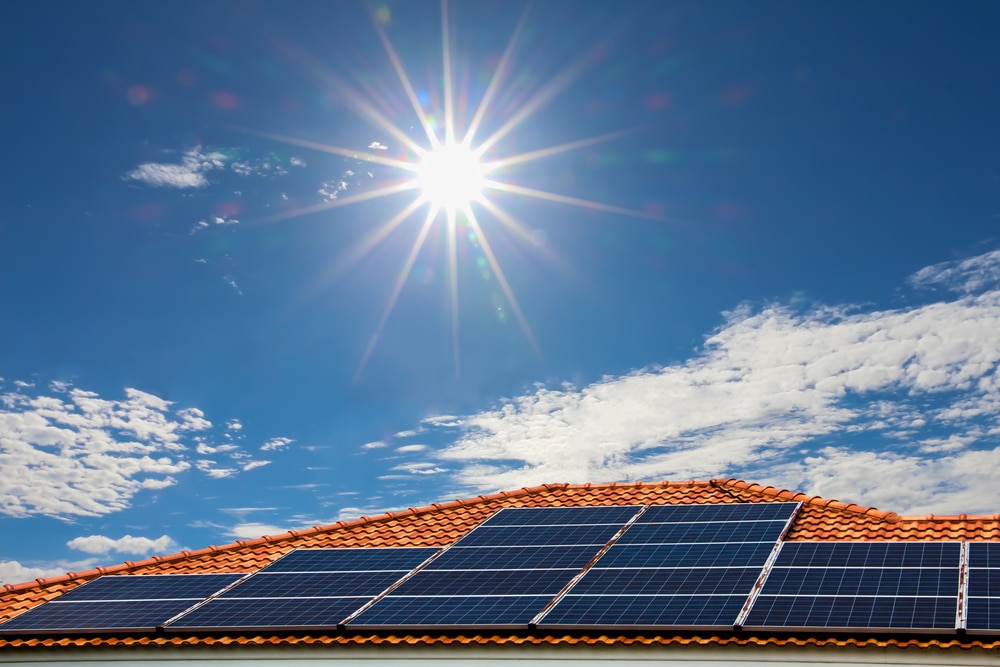Whether you’re looking to reduce your carbon footprint or save money on your electric bill, using solar power is a great option. Solar cells convert light and other forms of electromagnetic radiation into electricity. But what about when the sun goes down? Can an artificial light source charge a solar cell? In this article, we will answer this question and provide some insight into how a solar power panel captures light.

Can solar panels charge without sunlight?
This may come as a surprise but, technically, yes. Solar panels can charge with other forms of visible light besides sunlight. Artificial lights such as incandescent fluorescent bulbs can be used to charge solar cells, provided the light is strong enough.
What light can be converted to solar energy is dictated by a certain range of wavelengths of light, which are present in both direct sunlight and artificial light. Therefore, yes, it is technically possible to charge solar cells without sunlight.
HOWEVER, (and I think you suspected this was coming), current solar cell technology cannot efficiently convert artificial light into any useful amount of electricity. To explain why not, let’s look at how solar panels capture light.
Solar panels are specifically designed to capture sunlight
When light shines on a photovoltaic (PV) cell – also called a solar cell – that light may be reflected, absorbed, or pass right through the cell.
The PV cell is composed of semiconductor material. When the semiconductor is exposed to light, it absorbs the light’s energy and transfers it to negatively charged particles in the material called electrons. This extra energy allows the electrons to flow through the material as an electrical current. This current is extracted through conductive metal contacts – the grid-like lines on a solar cell – and can then be used to power your home.
The efficiency of a solar cell is determined by the amount of energy it can extract from the light source. This largely depends on the light’s characteristics, such as its intensity and wavelengths. Longer wavelengths have less energy and shorter wavelengths have more.
The “band gap” of a PV semiconductor is a key feature, determining which wavelengths of light it can absorb and convert to power. This will translate to a limited range of wavelengths, with the cell ignoring those that are longer and shorter. If the semiconductor’s band gap matches the wavelengths of light shining on the PV cell, it can efficiently make use of the available energy.
Solar cells have been specifically designed to absorb sunlight. A standard silicon solar cell responds to most of the visible parts of the sun’s light spectrum, roughly half of the infrared light, and a portion of the ultraviolet light (but not much of it, making UV lights some the least efficient lights to charge a solar light with).

High-efficiency solar cells
To increase the efficiency of solar cells, there are multi-layer designs that mix the silicon with impurities, each with its own response curve. The top layer absorbs shorter wavelengths and the bottom converts the longer ones. The result is significantly better conversion efficiency and better energy output.
Artificial light is a poor choice for charging solar cells
Because artificial sources of light such as incandescent and fluorescent bulbs mimic the sun’s spectrum, they can charge solar cells to some degree and even power small devices such as calculators and watches. Nevertheless, artificial lights can never charge a solar cell as efficiently as direct sunlight can. This is due to a variety of factors:
Loss conversion: An artificial light must first convert electricity to light for the solar cells to absorb and convert back into electricity. During this conversion process, a percentage of the energy is lost. This means that the amount of energy generated by this method will always be less than the original amount of energy used.
Spectral intensity: The sun’s spectral radiance is extremely strong and constant, covering a wide variety of light wavelengths, which allows for maximum efficiency of light absorption in solar cells. Artificial lights not only have a weaker spectral irradiance than solar light, they also experience sharp fluctuations in spectral irradiance that reduce their overall energy absorption.
Barriers to light: Artificial lights often contain barriers such as bulbs and ballasts that temper their intensity and cause some of the light they emit to be either absorbed by glass or diffused into the room.
Charging solar cells in artificial light is a waste of energy
In short, there’s no real efficient or logical reason to try and power solar cells with artificial light.
No artificial light can mimic the strength and radiance of true sun rays, and certainly not at the level needed to perform efficiently. Just as you wouldn’t bother using a candle to cook your food (unless you’re on a fondue diet), you’d be wasting your time and literal energy trying to charge your solar panels with artificial light.
If you’re looking at ways to maximise your solar generation and consumption when there’s limited or no sunlight, it’s worth considering high-efficiency solar panels and a solar battery to store your solar-generated electricity for use at night or cloudy days.
Energy Matters has assisted over 30,000 Australians in their transition to clean energy. We can guide you toward a solar and/or battery storage solution that fits your lifestyle and budget. Receive up to 3 free solar quotes from our trusted network of accredited solar installers. It’s fast, free, and takes the hassle out of shopping around.











































